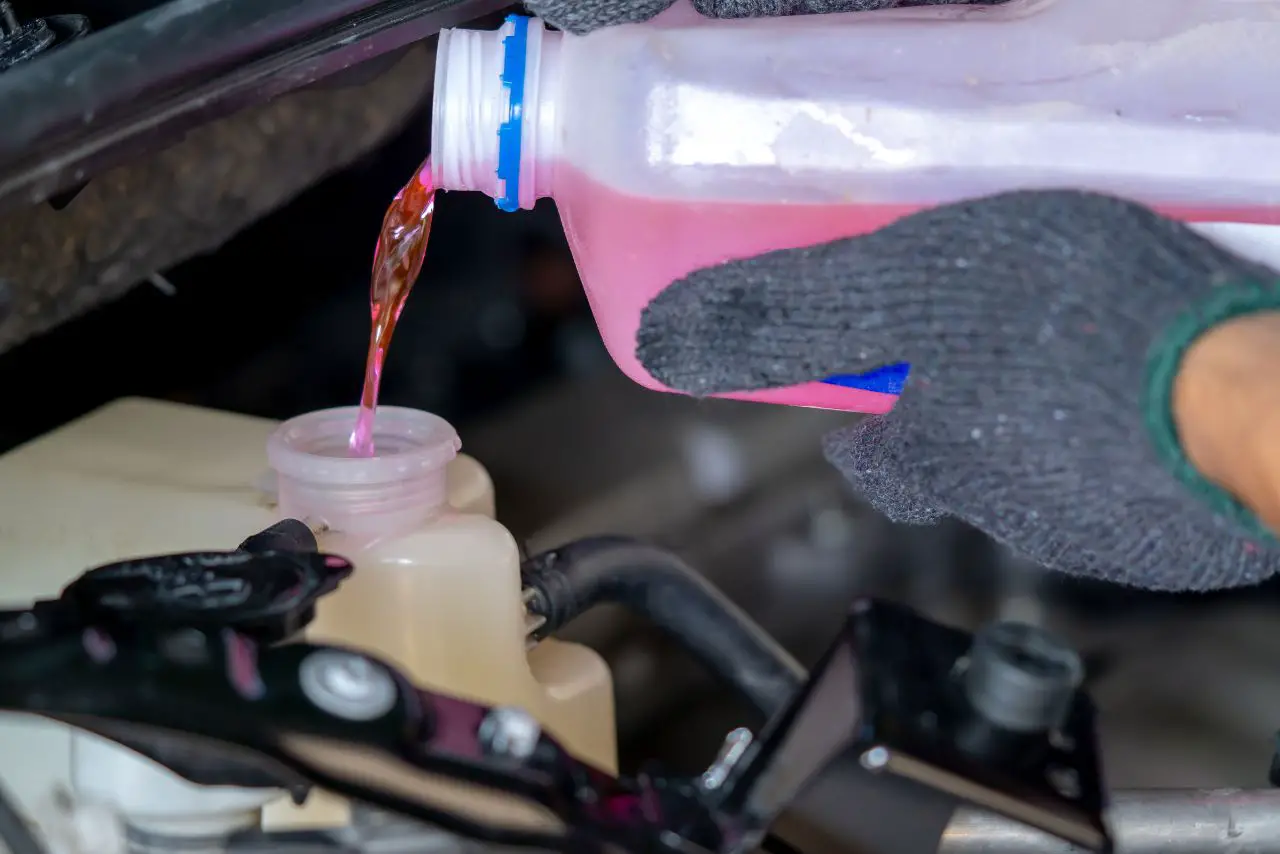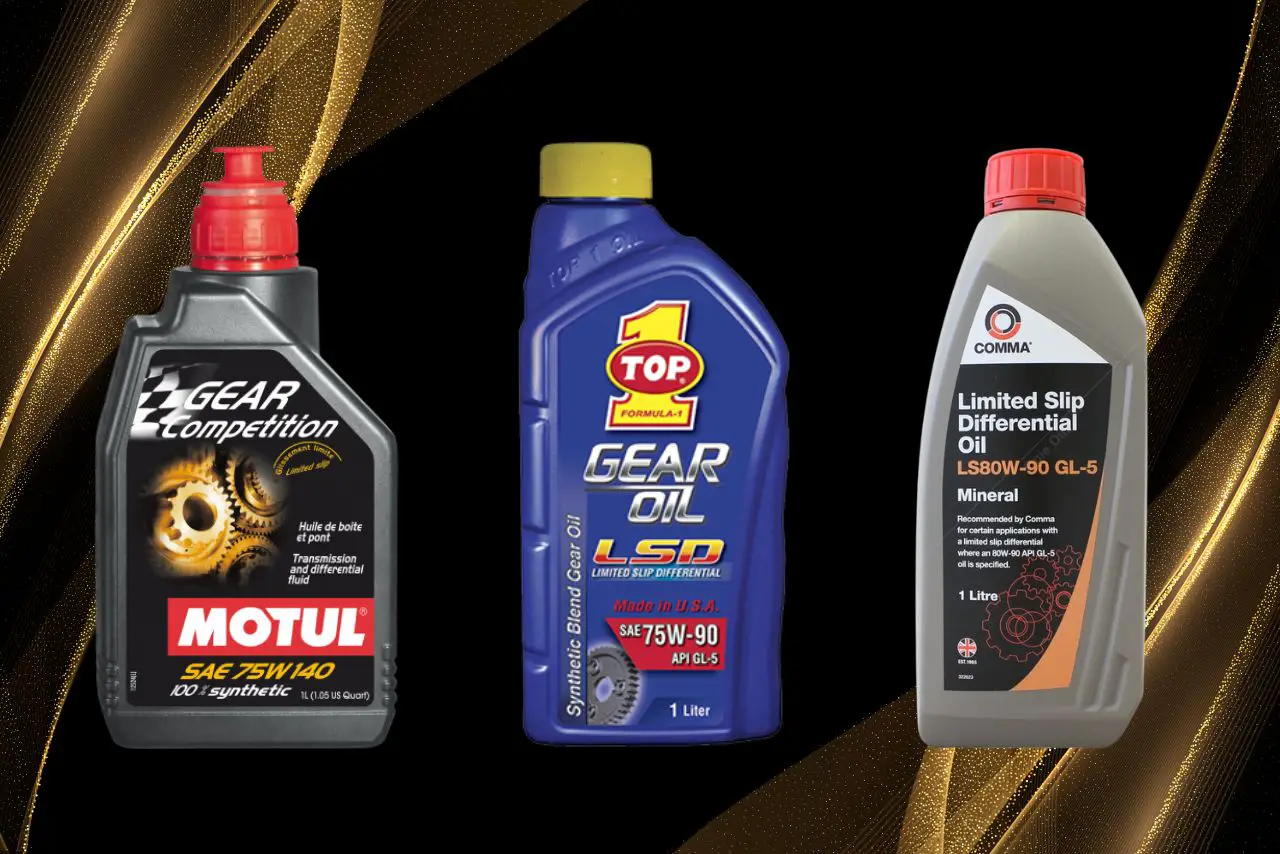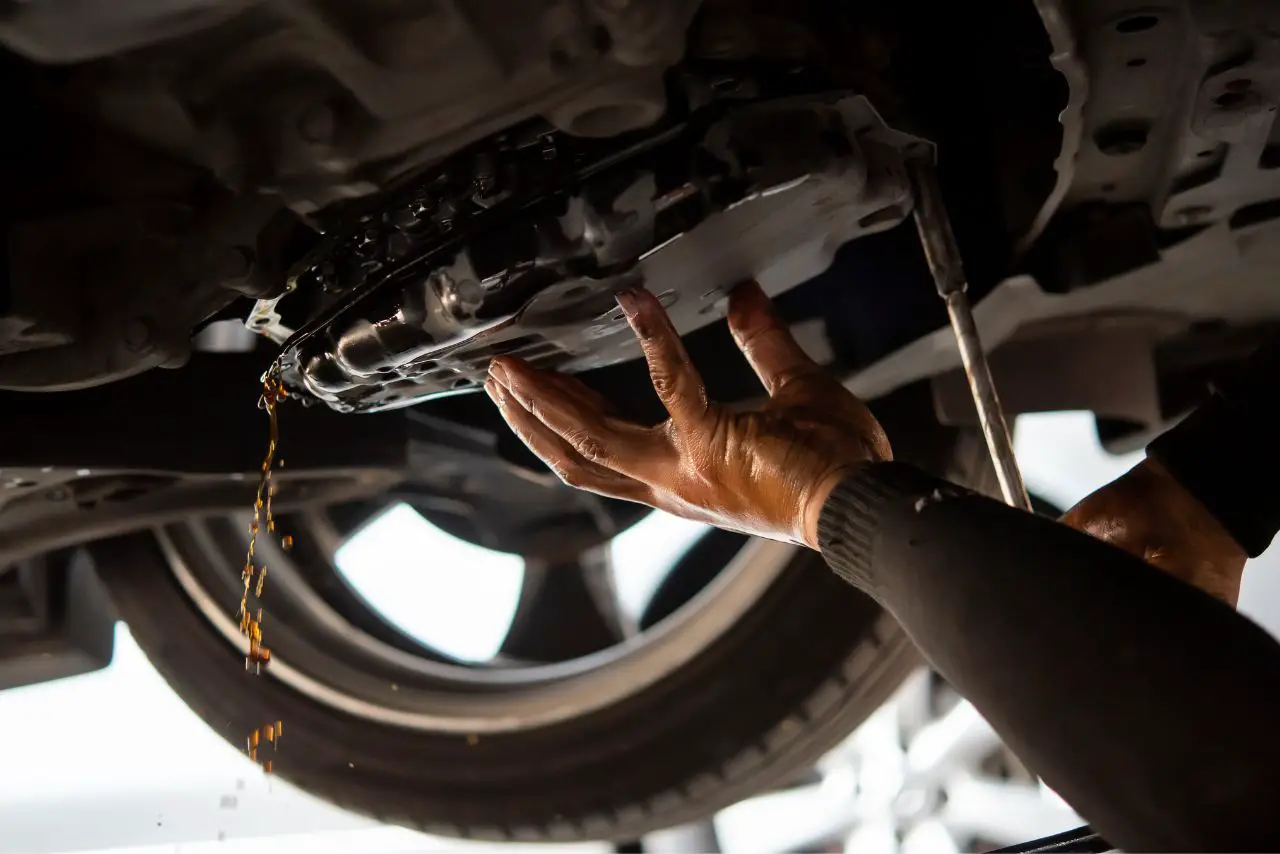If you own a Range Rover Sport, it’s essential to keep your vehicle functioning properly by ensuring that the coolant level is topped up regularly.
Coolant helps regulate the temperature of your engine and prevents it from overheating, which can cause significant damage to your car.
Without enough coolant, your engine may start to produce unusual sounds, and you may experience a decrease in performance and fuel economy.
Adding coolant to your Range Rover Sport is a simple task that you can complete in a matter of minutes. So, How To Add Coolant To Range Rover Sport?
In this article, we will guide you through the steps required to add coolant to your car.
By following our instructions, you can ensure that your vehicle is running at peak performance, which will give you the freedom to enjoy the road without worrying about any potential engine problems. So, let’s get started!
Table of contents
How To Add Coolant To Range Rover Sport?

To add coolant to a Range Rover Sport, park the vehicle on a level surface and turn off the engine. Allow the engine to cool completely before adding coolant. Locate the coolant reservoir, a translucent plastic container with a cap labeled “Coolant” or “Engine Coolant.”
It is usually located near the front of the engine compartment, on either the left or right side. Check the coolant level, which should be between the “MIN” and “MAX” lines on the reservoir.
If the coolant level is below the “MIN” line, add a 50/50 mixture of antifreeze and water to the reservoir. Be careful not to overfill the reservoir.
The coolant level should be between the “MIN” and “MAX” lines. Replace the cap on the coolant reservoir and close the hood.
It is important to check the coolant level regularly and add coolant as needed. Coolant levels can drop over time due to evaporation or leaks.
Never add coolant to a hot engine. Allow the engine to cool completely before adding coolant. Be careful not to overfill the coolant reservoir.
Overfilling the reservoir can cause coolant to leak out of the system, which can damage the engine. Wear safety glasses and gloves when handling coolant. Coolant can be irritating to the skin and eyes.
Importance of Adding Coolant to Your Range Rover Sport:

You’ll want to make sure you add coolant to your Range Rover Sport regularly if you want to avoid costly engine damage. Coolant is an essential fluid that helps regulate the temperature of the engine and prevent it from overheating.
When your engine overheats, it can cause significant damage that can lead to expensive repairs. By adding coolant to your Range Rover Sport, you can ensure that the engine runs smoothly and efficiently, and you can avoid costly repairs.
The importance of adding coolant to your Range Rover Sport cannot be overstated.
Coolant not only helps regulate the temperature of the engine but also provides lubrication to the water pump, radiator, and other parts.
It also helps prevent corrosion and rust in the cooling system, which can cause leaks and other issues. By adding coolant regularly, you can extend the life of your vehicle and enjoy its many benefits.
In addition to preventing costly engine damage, adding coolant to your Range Rover Sport has many other benefits.
It can improve the performance of your vehicle, increase fuel efficiency, and reduce emissions. It also helps keep your engine running smoothly, which can make your driving experience more enjoyable.
Here Is Step by Step Guide on How to Add Coolant to Range Rover Sport:
1. Gather Necessary Tools and Materials:
Before you add coolant to your Range Rover Sport, you need to gather the necessary tools and materials. This includes the appropriate coolant type and quantity recommended by the manufacturer.
It is also important to take safety precautions, such as wearing gloves and safety glasses, to prevent any accidents while working on your vehicle.
Coolant Type and Quantity:
Make sure you use the recommended coolant type and fill the reservoir with the appropriate quantity to ensure proper engine performance in your Range Rover Sport.
Coolant properties play a significant role in maintaining optimal engine performance in your vehicle.
The coolant must be compatible with your engine’s specifications, so make sure to check your vehicle’s manual for the recommended coolant type and its properties.
Additionally, it’s essential to use compatible coolant brands. Mixing different types of coolant can lead to engine damage, so always stick to the recommended coolant type and brand.
Safety Precautions:
When driving your Range Rover Sport, it’s crucial to prioritize your safety and the safety of others on the road. Proper handling of coolant is essential to avoid accidents and vehicle damage.
Here are some safety precautions to keep in mind when adding coolant to your vehicle:
Proper handling of coolant is not only essential for your safety but also for the environment. Always follow disposal procedures to ensure that you’re not harming the environment or contributing to pollution. When disposing of used coolant:
By taking the necessary safety precautions and following proper disposal procedures, you can ensure a safe and responsible coolant replacement process for your Range Rover Sport.
2. Locate the Coolant Reservoir:
The coolant reservoir is typically located near the front of the engine compartment and is usually a white or translucent plastic container.
It’s important to note that the coolant reservoir should always be checked when the engine is cool to avoid injury from hot coolant.
Once you have located the coolant reservoir, the next step is to check the coolant level. The coolant level should be between the “min”and “max”markers on the side of the reservoir.
If the coolant level is low, it’s time to refill the coolant. Before adding coolant, make sure to check the owner’s manual for the correct type of coolant to use for your Range Rover Sport.
To refill the coolant, simply unscrew the cap on the coolant reservoir and pour in the coolant until the level reaches the “max”marker. Be sure to pour slowly to avoid spilling any coolant.
Once the coolant level is at the correct level, replace the cap on the reservoir and start the engine to check for any leaks or other issues.
3. Check the Coolant Level:

Locating the coolant reservoir is just the first step in ensuring your Range Rover Sport is running smoothly; keep an eye on the coolant level to prevent any potential engine issues.
To check the coolant level, locate the coolant reservoir and check the level against the markings on the side of the reservoir. If the level is low, add coolant to the reservoir until it reaches the appropriate level.
Signs of low coolant levels include reduced engine performance, the engine overheating, or a warning light illuminating on the dashboard.
By checking the coolant level regularly, you can avoid these issues and keep your Range Rover Sport running smoothly.
Checking the coolant level is a critical step in maintaining the health of your Range Rover Sport’s engine. By doing so, you can catch potential issues before they become major problems.
Keep an eye out for signs of low coolant levels, such as reduced performance or the engine overheating, and promptly add coolant to the reservoir if necessary.
4. Add Coolant to Your Range Rover Sport:

Now that you’ve checked the coolant level in your Range Rover Sport, it’s time to add more coolant if necessary. Don’t worry, the process is quite simple and can be done in just a few steps.
Here’s a step-by-step process to help you add coolant to your Range Rover Sport.
First, make sure your engine is cool before you start. You don’t want to add coolant to a hot engine as it can cause serious burns.
Once the engine is cool, locate the coolant reservoir under the hood. It’s usually a white plastic container with a cap labeled “coolant.”
Next, remove the cap and check the fluid level. If it’s low, you’ll need to add more coolant. Make sure you use the correct type of coolant for your vehicle. You can find this information in your owner’s manual.
Once you have the correct coolant, add it to the reservoir until it reaches the “full” mark.
If you’re having trouble adding coolant or the fluid level keeps dropping, there may be a leak in the system. In this case, it’s best to take your vehicle to a professional mechanic for troubleshooting.
5. Check Coolant Levels Again:
After checking the coolant level earlier, you should double-check it again to ensure that it hasn’t significantly decreased since your last check.
Common mistakes include forgetting to properly tighten the radiator cap after adding coolant or improperly adding coolant to the overflow tank.
It’s important to ensure that the radiator cap is fully tightened to prevent any leaks or loss of pressure.
If you find that the coolant level has significantly decreased, it may be a sign of a larger issue with your vehicle’s cooling system.
Troubleshooting steps may include checking for leaks in the hoses or radiator, checking the water pump, or inspecting the head gasket. If you’re unsure of how to troubleshoot these issues, it’s best to consult with a professional mechanic.
6. Maintenance Tips:
To keep your Range Rover Sport in top condition, it’s crucial to perform routine checks and troubleshooting. This not only ensures that your vehicle runs smoothly but also helps prevent costly repairs down the line.
Here are four maintenance tips to keep in mind:
Frequently Asked Questions
What Type of Coolant Should I Use for My Range Rover Sport?
To ensure optimal performance of your Range Rover Sport, it’s crucial to use the manufacturer-recommended coolant types for different car models.
Using the wrong coolant can lead to engine damage and costly repairs.
Always check your owner’s manual for the correct specifications.
Can I Add Water Instead of Coolant to My Range Rover Sport?
Using water instead of coolant in your Range Rover Sport can lead to corrosion and overheating, which can cause expensive damage.
While water is a temporary solution, it’s best to use coolant for long-term benefits and to prevent risks.
What Should I Do if I Notice a Coolant Leak in My Range Rover Sport?
If you notice a coolant leak in your Range Rover Sport, inspect it immediately. Look for visible damage or worn hoses.
If necessary, repair the leak promptly to avoid further damage to your vehicle.
Is It Safe to Add Coolant to My Range Rover Sport While the Engine Is Still Hot?
Never add coolant to a hot engine in your Range Rover Sport. Doing so can cause severe engine damage.
Regularly check coolant levels to prevent leaks and ensure your engine runs smoothly.
Conclusion and Final Thoughts! 💭
Adding coolant to your Range Rover Sport is an essential maintenance practice that ensures your vehicle runs smoothly and avoids overheating.
To add coolant, you will need to gather the necessary tools and materials, locate the coolant reservoir, check the coolant level, add the coolant, and check the levels again.
Remember to always follow the manufacturer’s instructions and recommendations for the type of coolant to use.
Regular maintenance of your vehicle is crucial to its longevity and performance. Along with adding coolant, you should also check other fluid levels, such as oil and brake fluid.
Additionally, it’s important to keep your vehicle clean, check tire pressure, and perform routine inspections. By keeping up with these maintenance tasks, you can avoid costly repairs and ensure your Range Rover Sport is always running at its best.
- 10 Best Gear Oil for Limited Slip Differentials (Reviewed!)

- Allison 1000 Transmission Fluid Type (5 Best Options!)

- 91 Octane Vs 93 Which One You Use? (The Surprising Truth!)

- Oil Pressure Gauge Not Working: (Guaranteed Fix!)

- 10 Best Transmission Fluid for 4l60e (Tested by Experts!)

- 10 Best Ceramic Coating For Wheels (Used By Real Users!)






